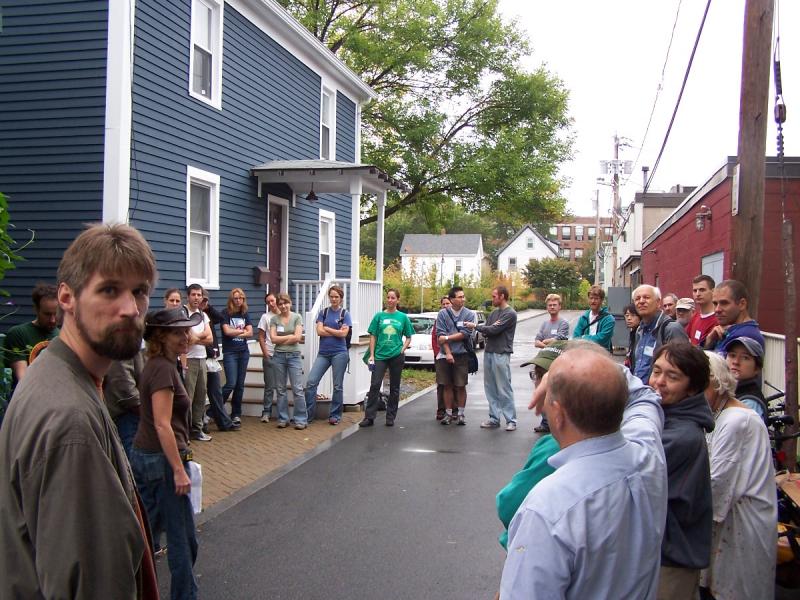Shareable reader George Mokray writes: "The Cambridge MA group Home Energy Efficiency Team (HEET) has been organizing monthly weatherization barnraisings for over a year"–on October 24, in conjunction with the international 350.org actions,, HEET got 100 volunteers and team leaders working on 3 sites.
"We installed 348 efficient compact florescent light bulbs, 4 programmable thermostats and we air-sealed 2 buildings to save in all about 31,270 pounds of carbon this year alone," reports HEET. "Our work will continue saving carbon and $ on energy bills every year for at least a decade, meaning over the next decade our work will save 312,700 lbs of carbon." Here's a nine-minute video on how they run a barnraising:
Are you an energy wonk? Want to know how they calculated that they will help save 312,700 lbs of carbon with a barnraising? Here you go:
CFLs – Each 60 watt incandescent light bulb left on for 3 hours a day on average traded out for a CFL left on the same amount a time saves on average 85 lbs of CO2 per year. (348 bulbs x 85 lbs of CO2 = 29,580 lbs of CO2 per year saved. Over the decade that most CFLs work, that will turn out to be 295,800 lbs of C02). Data from EnergyStar website.
Programmable Thermostats – A programmable thermostat allow the residents to automatically set back the temperature of the house at night while the residents are sleeping or during the work day while the residents are gone and thus save in heat (the concept works also for air conditioning during the summer). It can save up to 10% of a heating bill easily. In this case, we are assuming the thermostats installed at the Women’s Center will save 5% of the heating bill. The typical house in the Boston area uses 800 therms of gas. A 5% savings is 40 therms per year from now on. Each therm = 13 lbs of CO2. 40 * 13 = 520 lbs of CO2 per year from now on.
Air-sealing a Building – Before each barnraising, we run a blower door test that quantified how “leaky” the house was (in cubic feet per minute —CFM– of airflow out of the building at 50 pascals of pressure). After each event we run another blower door test and found, in the Wendell St site, we’d reduced the CFM by 850 cfm or 16% of how leaky the building had been. In the Women’s Center, the CFM reduction was 430 or 5% of how leaky the building had been. A reduction of 100 CFM (in the Boston climate) means roughly 7 less therms are needed to heat that home each winter. These 2 buildings will thus need about 90 less gas therms per year. Each therm = about 13 lbs of CO2. This equals 1170 less lbs of CO2 every year.









